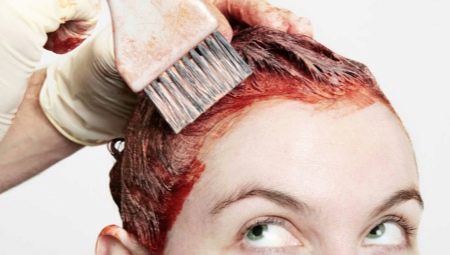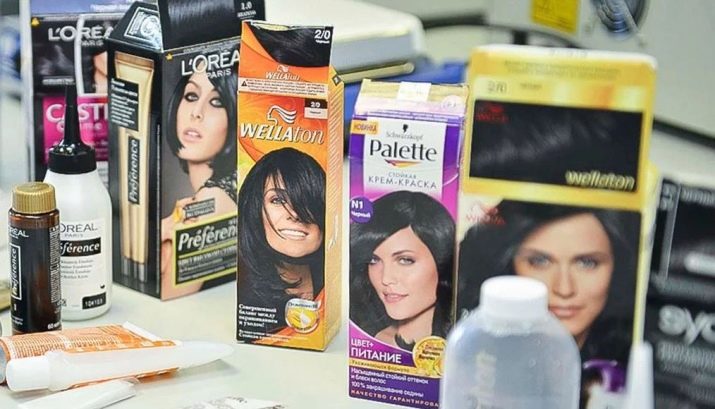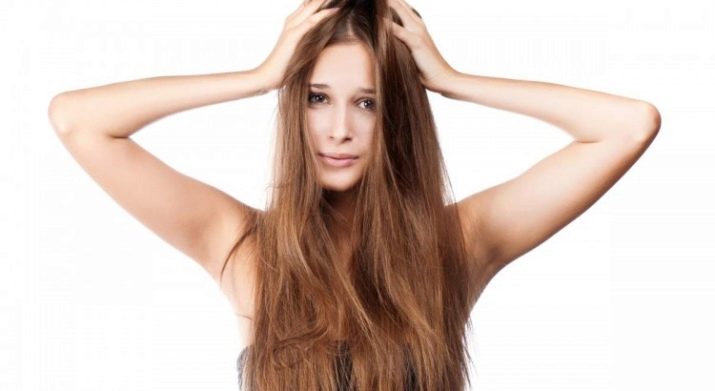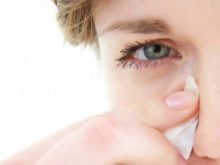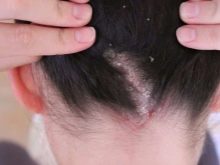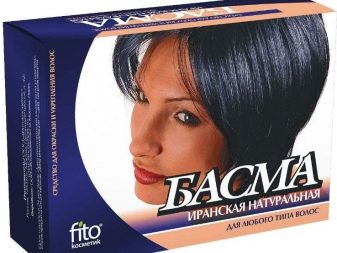From the development of allergic manifestations of hair dye, unfortunately, can not be insured. We will tell you more about this form of allergy.
The reasons
Hair colors help create a unique image. Currently there are many different coloring products that help to change the natural color of the curls. The peculiarity of such paints is that they have different shades and are available in different countries, the products differ in their chemical composition, namely, what ingredients are included in their composition.
Modern paints contain, as a rule, quite a lot of chemical components. Each of them has its own characteristics of the impact on the human body. Contact with such substances on the scalp and leads to the appearance of allergic symptoms in some women.
It is worth noting that an allergy to paint is an individual reaction. For example, in one woman she may appear, and in another - not. This largely depends on the individual sensitivity of the organism to the chemical components present in the composition of the product. Such substances, getting into a sensitized (sensitive) organism, act as allergens - that is, substances that provoke adverse allergy symptoms.
Many women wonder whether there are such hair dyes that can not cause allergies in general. Doctors note that, unfortunately, there is a risk of allergic rashes after using coloring compositions. Moreover, this risk is significantly increased in people who have a predisposition to the development of allergies. And also in the group of "high risk", if possible, the appearance of allergic manifestations includes women who have had bronchial asthma.
Experts identify several components that can provoke the appearance of allergies, with high probability. Quite often there are several substances.
- Methylaminophenol. This substance is contained not only in some hair dye products, but also in other cosmetics. This component is labeled as part of a product, usually Methylaminophenol.
- Isatin. It is mainly found in products with relatively low resistance.
- Paraphenylenediamine. This component contributes to the fact that the paint applied to the hair lasts a long time. Some experts believe that this component most often provokes the appearance of allergic rashes.
How does it manifest itself?
Clinical signs of allergy after exposure to the scalp hair dye can be different. Symptoms also vary in severity. For example, one woman after using paint will only have a slight burning or itchy rash, and another after applying a similar product - angioedema.
The severity of symptoms in advance is impossible to predict.
One of the most frequent manifestations of allergy to the coloring composition is the appearance of severe itching of the head. Moreover, this symptom usually occurs within 20-25 minutes after application of the product on the skin. Itching in some cases may be so unbearable, it can significantly worsen the state of health.
The occurrence of itching during the exposure of the paint is an alarming symptom.If this clinical sign only increases with time, then doctors recommend not to tolerate and immediately wash the coloring product from the skin. After that, it is necessary to assess the condition of the skin. For this fit the usual mirror. If the skin has red spots or even blisters that itch badly, then in this case, it is more likely to indicate the development of an allergy.
In addition to red spots and itchy blisters, allergies can manifest themselves in a different way. Thus, the development of an allergic pathology may be indicated by the appearance of:
- swelling of the face, neck, ears, and lips;
- strong peeling of the skin in places of contact with paint;
- sudden onset of a runny nose with watery nasal discharge;
- lacrimation.
One of the most dangerous allergic conditions for allergies is angioedema. This pathology can occur even in humans after the first use of allergenic paint. The danger of this pathological condition in many ways lies in the fact that it develops, as a rule, rather quickly and can lead to acute respiratory failure. If medical assistance is rendered out of time, this is fraught with extremely dangerous consequences.
Quincke edema is accompanied by the development of a number of adverse symptoms. This pathology occurs with the appearance of severe swelling of the face and neck. Severe swelling leads to squeezing of the larynx, and therefore becomes the cause of respiratory failure. The face changes in Quinck edema. At the same time, the eye crevices usually narrow, and the lips, on the contrary, become larger due to the accumulation of fluid.
Adverse allergy symptoms to paint may appear in women of any age. At the same time, women are in the risk zone, having an increased individual sensitivity of the organism to various chemical components.
Such women should always be careful before buying hair dye.
How to remove the symptoms?
In order to get rid of an allergic reaction after using a hair dye, you can use several methods. The first thing that needs to be done is to thoroughly wash the product from the scalp. It is recommended to do this immediately after the onset of adverse allergies.
Medication
Eliminate the adverse effects of allergy special means - antihistamines. They contain components that help reduce skin itchiness and also eliminate puffiness. Such drugs include, for example, Suprastin, Zyrtec, Claritin and many others.
When symptoms of angioedema appear, doctors advise you not to carry out home treatment only, but to seek medical advice. This will help reduce the risk of adverse effects.
Folk ways
To reduce itching, which in most cases accompanies allergic skin rashes, you can rinse your hair with a solution of chamomile.
The components contained in this herbal remedy will have an anti-inflammatory effect and help to normalize the condition of the scalp.
For rinsing, you can also use decoctions made from nettle and oak. Typically, these tools help with minor allergic manifestations. If the allergy manifested itself strongly, then in this case the use of special medications is required.
What to look for when buying?
Choosing a hair dye is a pretty demanding task. Choosing a product to change the color of your hair is recommended not only by the color or name of the company producing it. It is advisable to pay attention to the chemical composition of the product. The presence of paraphenylenediamine and isatin in it suggests that such a paint in a woman who is hypersensitive to the effects of these substances may provoke allergic rashes.
But it is also very important to check its shelf life before purchasing a coloring product. Do not recommend to be painted by expired paints. The use of such cosmetics increases the risk of developing allergies and other adverse symptoms. And the result of changing hair color may not be at all what we would like. That is why before buying a product it is recommended to check its expiration date.
Nowadays professional paints are becoming more and more popular. Such products are usually of high quality and allow you to achieve the desired shade of hair. These funds were used at first only by professionals in beauty salons, but now you can buy them in almost any cosmetic store.
Hypoallergenic professional paint will help reduce the risk of developing allergies.
Many women think that by buying paint from a well-known company, they are insured against the adverse effects of its use. However, this is not quite true. Unfortunately, the higher the popularity rating of paint, the more often, as a rule, it is forged. At the same time, unscrupulous manufacturers significantly change the chemical composition of the product and can even add toxic components to it. The use of such hair dyes is extremely dangerous, as it can lead not only to the appearance of allergic symptoms, but even to chemical burns of the scalp and other adverse effects.
Alternatives
Modern manufacturers of hair dyes are trying to protect their consumers as much as possible against various adverse effects after using hair dyes that they produce. At the same time they try to make the product retain its durability and allow to achieve the desired shade of hair. Some manufacturers choose the technology of ammonia-free staining. It is believed that this paint does not contain ammonia products in its composition, which means that it may be less likely to provoke the appearance of adverse symptoms.
Some beauties believe that in order not to encounter adverse allergy symptoms, only natural dyes should be colored. These include henna and basma. Of course, these products are of natural origin, and therefore do not contain such an abundance of chemical components, as ordinary hair dyes.
However, henna and basma have not only advantages, but also certain disadvantages. These include, for example, a small color palette of shades. The use of such funds, of course, reduces the risk of allergies, but does not completely exclude it. Apply such products for hair dye can only be when they are well tolerated.
One of the options for coloring, in which there is relatively little damage to the hair, is highlighting. In this case, locks of curls are painted with a small indentation from the roots.
This technique also provides for dyeing not all the hair, but only individual strands.
Allergist Tips
To date, there is no paint, which in one hundred percent of cases would guarantee the impossibility of the appearance of allergies. In general, experts advise to carry out any experiments with paint carefully. If, after applying the coloring agent, allergic manifestations have appeared on the scalp, then its use should be abandoned. In this case, it is better to choose some alternative product.
Before applying any paint, be sure to conduct a test for individual sensitivity. Such recommendations are given not only by allergists, but also by manufacturers of these products. The need for this test is indicated in a special instruction, which is in the package with paint. If, after conducting such a preliminary examination, allergic symptoms appeared on the skin, it is better to refuse to use the product in the future.
For information on how to properly test for an allergic reaction to paint, see below.
